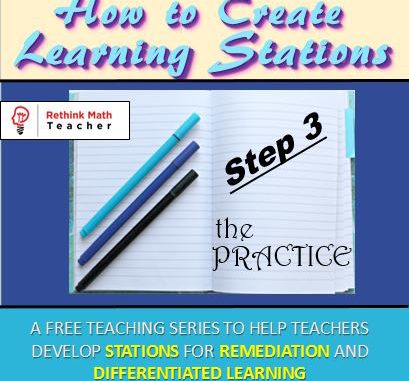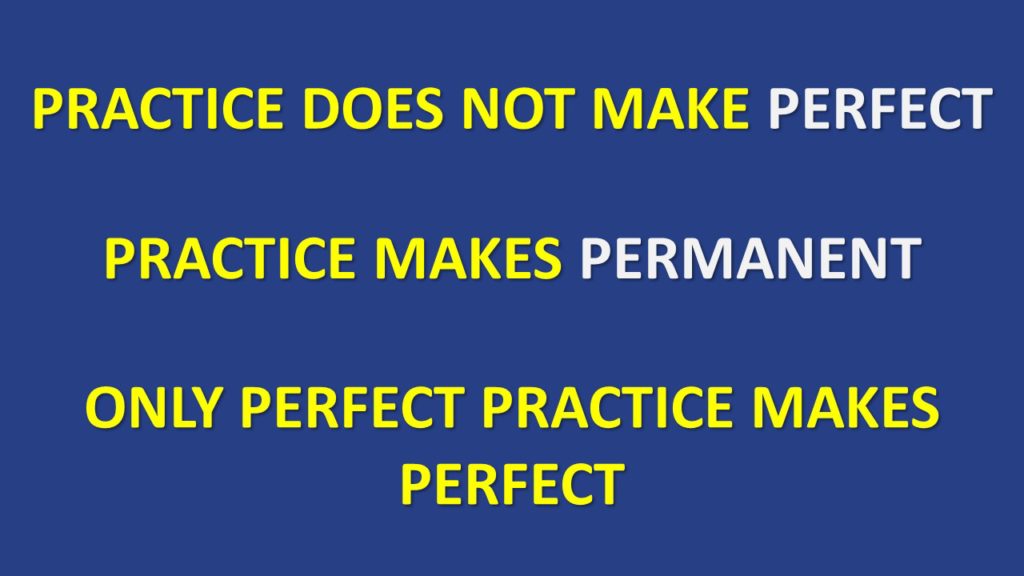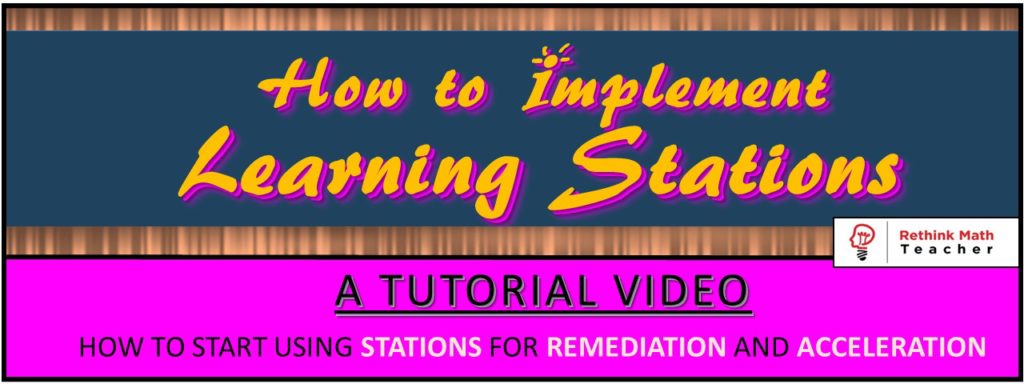
When a coach teaches an athlete the proper form of some skill (swinging a gulf club, throwing a football, shooting a basketball, etc.), the coach first demonstrates, then (s)he has the student perform the task multiple times, giving corrective feedback to make sure the athlete is completing the task properly.
Practice does NOT make perfect; practice makes PERMANENT. Only perfect practice makes perfect.
This is why immediate feedback is SO IMPORTANT, otherwise a bad habit is being reinforced.
I’m always frustrated when my math teachers hand students a worksheet to do in class, with no feedback. There is no value in doing 15 practice problems, if the student has done them all incorrectly.
Online practice websites like Khan Academy and IXL are so valuable because they give instant feedback after each problem. In this way, the student immediately recognizes that they have made a mistake, and can learn from that mistake.
Remember, mistakes are part of the learning process.
Thomas Edison famously said, “I have not failed, I’ve just found 10,000 ways that did not work.”
MEANINGFUL PRACTICE
Learning a skill involves practicing it, properly, until it becomes permanent. Thus, you must give your students lots of meaningful practice.
It is sad that a common accommodation given to struggling students is ‘complete less problems.’ If you struggle with something, you need MORE practice, not LESS.
Equally important is making sure that as the student practices, (s)he is receiving immediate feedback, so that they are learning from their mistakes, and discovering the proper way to solve problems.
LEARNING STATION PRACTICE
In your learning stations, you have already broken the standard down into the individual math skills needed to perform the task.
You then built a station for each skill, which thus far has consisted of a reteach (either by video or some printed aid) that also had the students take notes.
The next portion of this station is meaningful practice; I.e., practice with immediate feedback.
I recommend two ways of accomplishing this.
ONLINE PRACTICE
First, online practice, if you have the classroom technology to do so.
Here’s some resources we recommend:
- com is a paid website, but you can use it on a 30 day free trial period. Not only does it have a great selection of skills to work on, but each skill increases in rigor as the student becomes more successful.
- org, which is free. It takes some time to setup the teacher side of the website, and build your classroom, but after that it is worth it, not only for its tutorial videos, but for its practice component full of hints and immediate feedback.
- com is also free, but there is no teacher database to review student answers or data.
- Finally, Google Forms inside of Google Classroom also works wonderfully, but you have to build your own assessments. However, you can set it so that the student gets immediate feedback. Thus it can work just like the above websites, but will take longer for you to set it up.
NON-DIGITAL PRACTICE
Even with worksheets and textbooks, you can still give immediate feedback to students, even when each student is working on a different skill.
Most textbooks have the answers to the odd questions in the back of the book. Encourage your students to check these questions AFTER they have done the work. You must also teach them to go back and look at their notes, if they got the question wrong, to discover how to get it correct, before moving on to the next problem.
Worksheets can do the same thing for you. I encourage all math teachers to keep the answer sheets to the worksheets in an accessible place for students, so that they can check their work as they move along. You can even fill in some of the worksheets, showing all the work, so that the student can check that portion of it to.
THE STATION
Your remediation station should have LOTS of meaningful practice, so that the student can become proficient at that skill.
I accomplish this with two days’ worth of work, one day online work and the other day in a textbook. I also print a worksheet for them to complete if they finish the other work before the period ends.
So, by now, each station should look like this:
Day 1: A Reteach (online or in print) with note taking
Day 2: Meaningful Practice, online or in print
Day 3: Meaningful Practice, online or in print
- When finished with all 3 days’ work, a worksheet
We will talk about implementing in the upcoming video. For now, start collecting resources to build your stations.






What are the websites you are recommending??
Thanks.
I recommend KhanAcademy, IXL, aaamath, and Google Forms. (I also hear LearnZillion now has practice exercises, but I have not yet investigated).